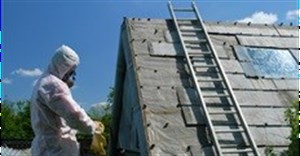
Subscribe & Follow
Jobs
- QC Learnership Vereeniging
- Customer Service Repairs Supervisor Vereeniging
- Sales Consultant / Representative George
- Sales Coordinator Midrand
Asbestos, from building industry hero to a latent killer
Asbestos was used extensively during the 1940's and 50's in construction materials such as acoustical plaster, paint and insulation. It was popular because of its strength, incombustibility and sound absorption capabilities. 70 years ago, it probably wasn't conceivable that the wonder product was actually a health hazard in disguise.
The World Health Organisation estimates that approximately 125 million people around the world are exposed to asbestos in the workplace. In addition, more than 107 000 people die each year from diseases resulting from occupational exposure. According to Richard Williams, Group CEO of the Gordon Verhoef and Krause (GVK) Group of Companies, the major concern with asbestos is that the effects of asbestos exposure and symptoms of associated diseases are only felt several years later, meaning that employee and public exposure levels are undetectable until it is too late. Thus, on top of fulfilling the legal requirements of the occupational Health and Safety Act along with the Asbestos Regulations, building owners have a moral obligation to ensure that any asbestos risks are handled by a registered asbestos contractor, Williams told SA Commercial Prop News.
"The inherent risk of acquiring property containing asbestos has become a critical consideration for astute property buyers, particularly since the promulgation of the Asbestos Regulations Act," Williams said, adding that building owners have a legal obligation to perform a survey of the building to ascertain and quantify the presence of asbestos. This requires an Approved Inspection Authority (AIA) to identify and examine the asbestos, complete an inventory and determine a course of action. "The owner may then be required to repair sections containing asbestos, have it removed completely or encapsulated so that it no longer poses a threat to building occupants," Williams said
Read the full article on www.sacommercialpropnews.co.za.














